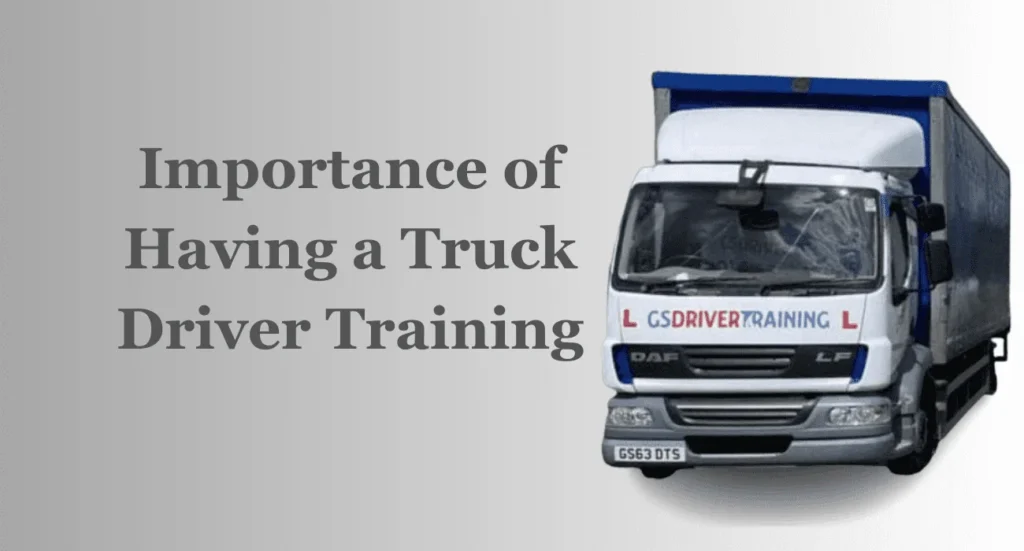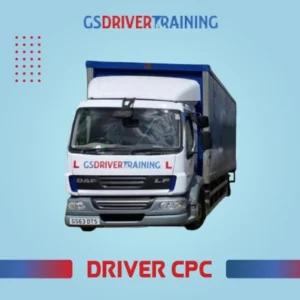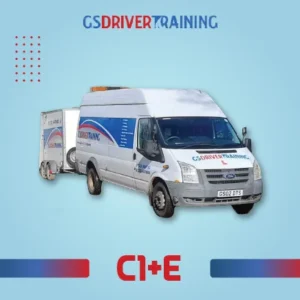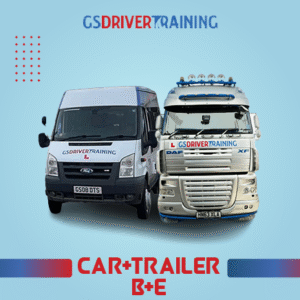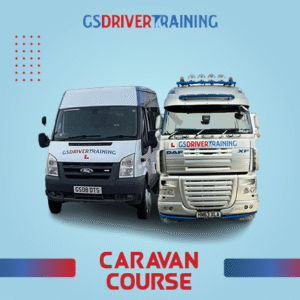Importance of Having a Truck Driver Training
Truck with GS Driver Training branding emphasizing the importance of truck driver training.
Of course, driving is a prerequisite for becoming a truck driver, but before you can even consider obtaining the required LGV training and Certificate of Professional Competence (Driver CPC), you must be at least eighteen years old and in possession of a valid driving licence. Apart from driving, your responsibilities will also include overseeing the loading and unloading of your truck, making sure that everything is packed securely, planning your route with your manager and making any required adjustments, and filling out paperwork and log books.
To get the proper training you can join GS Driver Training, we provide you the Truck Driver Training, as we also have our own Truck Driving School.
The Essential Requirements to Enter Truck Driver Training
1.In addition to being a skilled driver, a truck driver must be able to focus well because they will be on the road for extended amounts of time and must not mind working alone.
2.It’s also critical that you know a lot about safe driving practices and how to load and unload your truck.
3.In addition, you’ll need to be able to precisely complete all paperwork and record sheets, as well as have good people skills because you’ll unavoidably have to interact with consumers during deliveries.
Truck Driver Training: Eligibility Criteria
- Initially, you need to confirm that you are older than eighteen, possess a valid driver’s licence, and have normal vision.
- There are two types of LGV licences: Category C1, which allows you to drive rigid vehicles weighing up to 7.5 tonnes, and Category C, which allows you to drive rigid vehicles weighing more than 7.5 tonnes.
- In addition, there’s a test called Category C+E that lets you drive with a caravan.
- Choosing to enrol in the course ahead of time will allow you to apply for LGV driver positions.

Different Types Of HGV Licences
In the UK, there are various kinds of HGV/LGV trucks, and the licence required to operate one of these vehicles varies based on its weight and kind.
- Category C1 licence: You can operate lorries weighing between 3.5 and 7.5 tonnes with this permit.
- Category C licence: You can operate lorries weighing more than 7.5 tonnes with this permit.
- Category C+E licence: With this licence, you can operate articulated lorries, which are trucks with a rigid vehicle or tractor unit pulling a trailer.
Truck Driver Training: Additional Requirements
- Keep in mind that some HGV truck types—such as those that transport hazardous chemicals or livestock—have extra requirements. The purpose of these regulations is to protect the environment, other people, and drivers.
- Drivers of dangerous goods vehicles, for instance (ADR stands for Accord Dangereux Routier; this is not the same as our firm name!) are required to undergo training in the safe handling of hazardous items.
- In addition, they need to know the routes they’ll be travelling on and the protocols to be followed in case of an emergency.
- In a similar vein, drivers of vehicles that move cattle need to be taught how to handle them safely.
- They need to understand the rules governing the transportation of animals as well as their demands.
Also Read: How to Get an Ambulance Licence
HGV Training Courses
HGV Training in East Sussex
Category ADR Training

